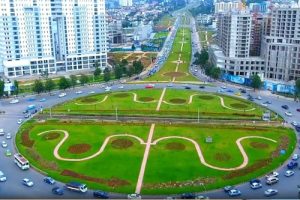
Ethiopia’s healthcare system faces significant challenges, particularly in the realm of orthopedic and trauma care. The high prevalence of bone-related injuries, often due to road accidents, workplace hazards, and sports-related incidents, has led to a growing demand for specialized medical services. This, in turn, has fueled the rise of medical tourism, as many Ethiopians seek treatment abroad, incurring substantial foreign currency expenditures.
Tackling this issue can have profound economic implications for Ethiopia, both in terms of reducing the outflow of foreign currency and stimulating domestic economic growth. By addressing the problem of bone trauma and strengthening the country’s healthcare infrastructure, Ethiopia can position itself as a hub for affordable and high-quality orthopedic care, potentially attracting medical tourists from neighboring countries and beyond.
Empirics shows that strengthening healthcare infrastructure along with investing in the construction and upgrade of healthcare facilities equipped with modern diagnostic and surgical equipment can not only improve patient outcomes but also create economic opportunities. These investments will generate employment in the construction, medical equipment, and healthcare sectors, while also improving the overall quality of life for the population.
Enhancing medical education and training is also of paramount importance to expand the capacity of medical schools and specialized training programs will not only increase the supply of qualified healthcare professionals but also contribute to the development of a robust knowledge. This can lead to the creation of high-skilled jobs, fostering innovation and positioning Ethiopia as a regional leader in medical education and research.
Besides, promoting medical tourism is the other focal point by establishing regulations and guidelines to ensure the quality and safety of medical services provided to foreign patients, Ethiopia can position itself as a preferred destination for affordable and reliable orthopedic care. This can attract a steady influx of medical tourists, generating revenue from medical fees, accommodation, and other related services, ultimately contributing to the country’s economic growth.
Exploring Alternative Financing Options: Implementing or expanding health insurance schemes and exploring innovative financing mechanisms, such as public-private partnerships, can help mobilize resources for healthcare infrastructure development and patient support. This can reduce the financial burden on the government and individuals, making orthopedic care more accessible and affordable for the population.
What is more strengthening the referral system coupled with establishing an efficient referral system that connects primary healthcare facilities with specialized orthopedic centers can lead to better patient outcomes and improved resource utilization? This can enhance the overall efficiency of the healthcare system, reducing the financial strain on the government and individuals.
By addressing the challenges of bone trauma and medical tourism, Ethiopia can unlock significant economic opportunities. Improved healthcare infrastructure, enhanced medical education and training, and the development of a vibrant medical tourism industry can contribute to job creation, attract foreign investment, and generate revenue, ultimately driving economic prosperity and improving the well-being of the Ethiopian population.
Here is the voice of professionals about the Ethiopian society of Orthopedics. Ephrem Gebrehana, Sub specialist chairing the presidency in the society conveyed across his message about the sector. The society is a very disciplined with high class professionals drawn from senior citizens having walked distant in chronology. Of course, the society began to register glittering success decade ago thwarting the need for foreign currency earnings and having treatment. Now we do have more than 600 professionals in the orthopedics center he said. The society has striving to equip about 275 sub specialists in 11 institutions.
According to him the society will undergo social and clinical diagnosis to achieve its ambitious plan in the sector interims of securing foreign currency and by their recue people victim of bone fragment and related cases. Furthermore the society has been undergoing studies in selected areas particularly in Sidama region along with the collaboration of Hawasa University comprehensive Specialized Hospital and other Grand hospitals across the country. The finding of the study aimed at the impact of traditional bone fixer and bone trauma. Meanwhile, 783 victims were issue of concern at eight hospitals for a year which is considered to be as high data set. As a result, Gambia, Tanzania and Ghana began to scale up best practice of Ethiopia in the orthopedics.
There had been efforts to train people about the lifelong impact of disability to the people with low economic dwell, elders’ teachers about primary care, he said.
In an event for media personnel on 26 August, 2024 it was revealed that BOSAD Project is a nick name for a research work called “Bone Setting Associated Disability” which is mainly focused on the type of Musculoskeletal (MSK) injury which patronized Traditional Bone Setting (TBS) as a first part of treatment and presented to health facility due to presence of complications seeking further management at health facility.
It approaches the problem via mixed study design including qualitative and quantitative studies. The quantitative study also used both facility-based (for pediatric and adult patients) and community-based approach to address the issues from different perspectives.
The data was collected from more than 1830 patients at health facility and more than 860 patients from community-based study. The qualitative study collect data from traditional bone setters, health professionals (orthopedic surgeons, nurses, researchers, leaders in the health arena, policy makers), different associations, patient treated with TBS and believed as they are doing fine, patient treated with TBS and believed as they have some kind of complications and other stakeholders. A total of more than 3,000 stakeholders’ information was utilized to reach into stakeholder analysis and preparation of implementation packages.
According to media briefing for members of the press on 26 August, 2024 the Ethiopian pediatric society put forward that BOSAD Project there are three major reasons which drive the birth of BOSAD Project in Ethiopia. one is paradoxical relationship between availability of modern orthopedic care and complications from TBS If we see the history of Ethiopian orthopedics, 10 years back (until 2014 G.C), there was only one residency center (Tikur Anbessa Specialized Hospital) where orthopedic specialty training was given and the total number of orthopedic surgeons including residents and those missionaries was less than 70. But now in 2024, we have 627 Orthopedics working force (352 seniors and 275 residents in training) and orthopedic residency program is being given at 10 different institutions from different region. Similarly, the orthopedic service was concentrated in Addis, but now the service is being given in most of the regions throughout the country with various levels of health facilities. Besides, these all improvements within the last 10 years, the complications from TBS are significantly increasing with time which was expected to be decreased due to the widely available modern musculoskeletal service throughout the country. This is what we call paradoxical relationship between availability of modern orthopedic service and complications from TBS, it was learned.
BY LAKCHEW ATINAFU
THE ETHIOPIAN HERALD THURSDAY 12 SEPTEMBER 2024





